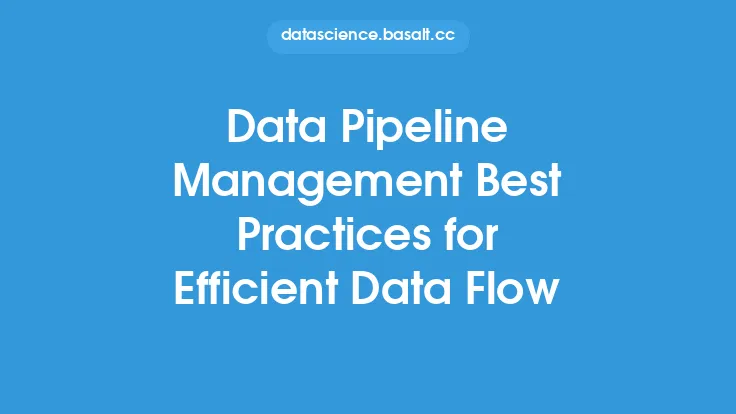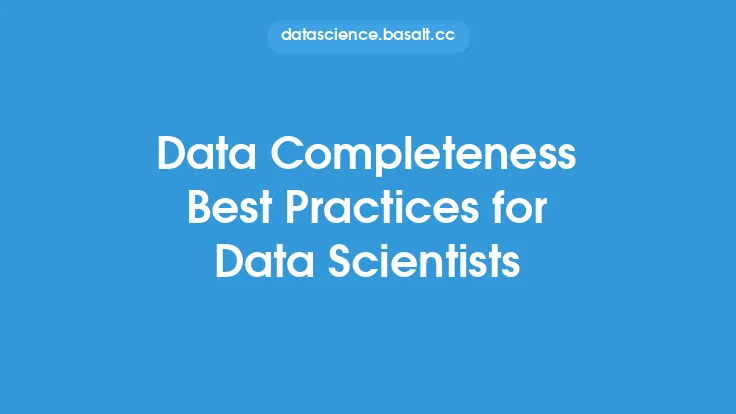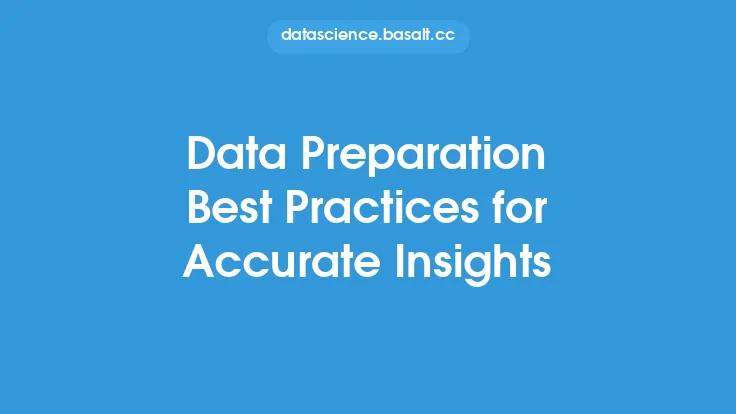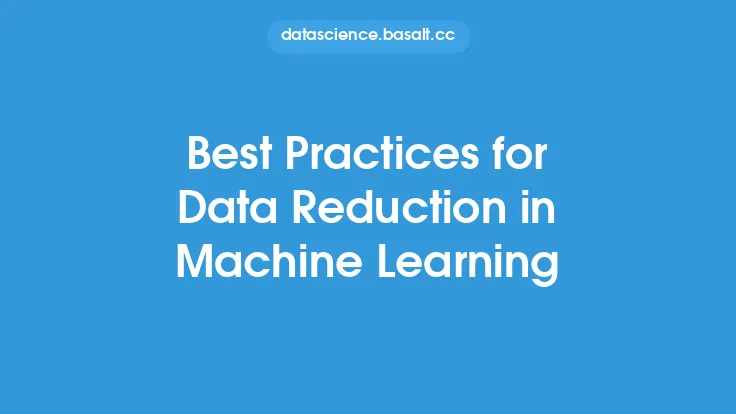Data wrangling is a critical step in the data analysis process, as it enables organizations to extract insights from raw data and make informed decisions. However, data wrangling can be a time-consuming and labor-intensive process, especially when dealing with large and complex datasets. To overcome these challenges, it is essential to follow best practices that ensure efficient data analysis. In this article, we will discuss the best practices for data wrangling, including data preparation, data transformation, data quality control, and data storage.
Introduction to Data Wrangling Best Practices
Data wrangling best practices are guidelines that help organizations to efficiently manage and analyze their data. These practices include data standardization, data normalization, data feature engineering, and data visualization. By following these best practices, organizations can reduce the time and effort required for data analysis, improve data quality, and increase the accuracy of their insights. Additionally, data wrangling best practices can help organizations to ensure data consistency, data integrity, and data security, which are critical for making informed decisions.
Data Preparation Best Practices
Data preparation is a critical step in the data wrangling process, as it enables organizations to clean, transform, and format their data for analysis. Some best practices for data preparation include handling missing values, removing duplicates, and data normalization. Handling missing values is essential, as it can significantly impact the accuracy of analysis. There are several techniques for handling missing values, including mean imputation, median imputation, and regression imputation. Removing duplicates is also crucial, as it can help to prevent data redundancy and improve data quality. Data normalization is another important step, as it enables organizations to scale their data to a common range, which can improve the accuracy of analysis.
Data Transformation Best Practices
Data transformation is the process of converting data from one format to another, which can help to improve data quality and enable more efficient analysis. Some best practices for data transformation include data aggregation, data grouping, and data pivoting. Data aggregation involves combining data from multiple sources into a single dataset, which can help to improve data quality and reduce data redundancy. Data grouping involves categorizing data into groups based on common characteristics, which can help to identify patterns and trends. Data pivoting involves rotating data from a row-based format to a column-based format, which can help to improve data visualization and enable more efficient analysis.
Data Quality Control Best Practices
Data quality control is a critical step in the data wrangling process, as it enables organizations to ensure the accuracy, completeness, and consistency of their data. Some best practices for data quality control include data validation, data verification, and data certification. Data validation involves checking data for errors and inconsistencies, which can help to improve data quality and reduce data redundancy. Data verification involves checking data against a set of predefined rules and constraints, which can help to ensure data accuracy and completeness. Data certification involves verifying the authenticity and integrity of data, which can help to ensure data security and trustworthiness.
Data Storage Best Practices
Data storage is a critical step in the data wrangling process, as it enables organizations to store and manage their data in a secure and efficient manner. Some best practices for data storage include data warehousing, data archiving, and data backup. Data warehousing involves storing data in a centralized repository, which can help to improve data quality and enable more efficient analysis. Data archiving involves storing data in a secure and compressed format, which can help to reduce data storage costs and improve data retrieval times. Data backup involves creating copies of data, which can help to ensure data security and prevent data loss.
Data Visualization Best Practices
Data visualization is a critical step in the data wrangling process, as it enables organizations to communicate insights and trends to stakeholders. Some best practices for data visualization include using clear and concise language, using appropriate charts and graphs, and using interactive visualization tools. Using clear and concise language can help to ensure that insights and trends are communicated effectively, which can help to inform decision-making. Using appropriate charts and graphs can help to visualize data in a way that is easy to understand, which can help to identify patterns and trends. Using interactive visualization tools can help to enable more efficient analysis and exploration of data, which can help to identify new insights and trends.
Conclusion
In conclusion, data wrangling best practices are essential for efficient data analysis, as they enable organizations to extract insights from raw data and make informed decisions. By following best practices for data preparation, data transformation, data quality control, data storage, and data visualization, organizations can reduce the time and effort required for data analysis, improve data quality, and increase the accuracy of their insights. Additionally, data wrangling best practices can help organizations to ensure data consistency, data integrity, and data security, which are critical for making informed decisions. By implementing these best practices, organizations can unlock the full potential of their data and drive business success.





